Dogfennel
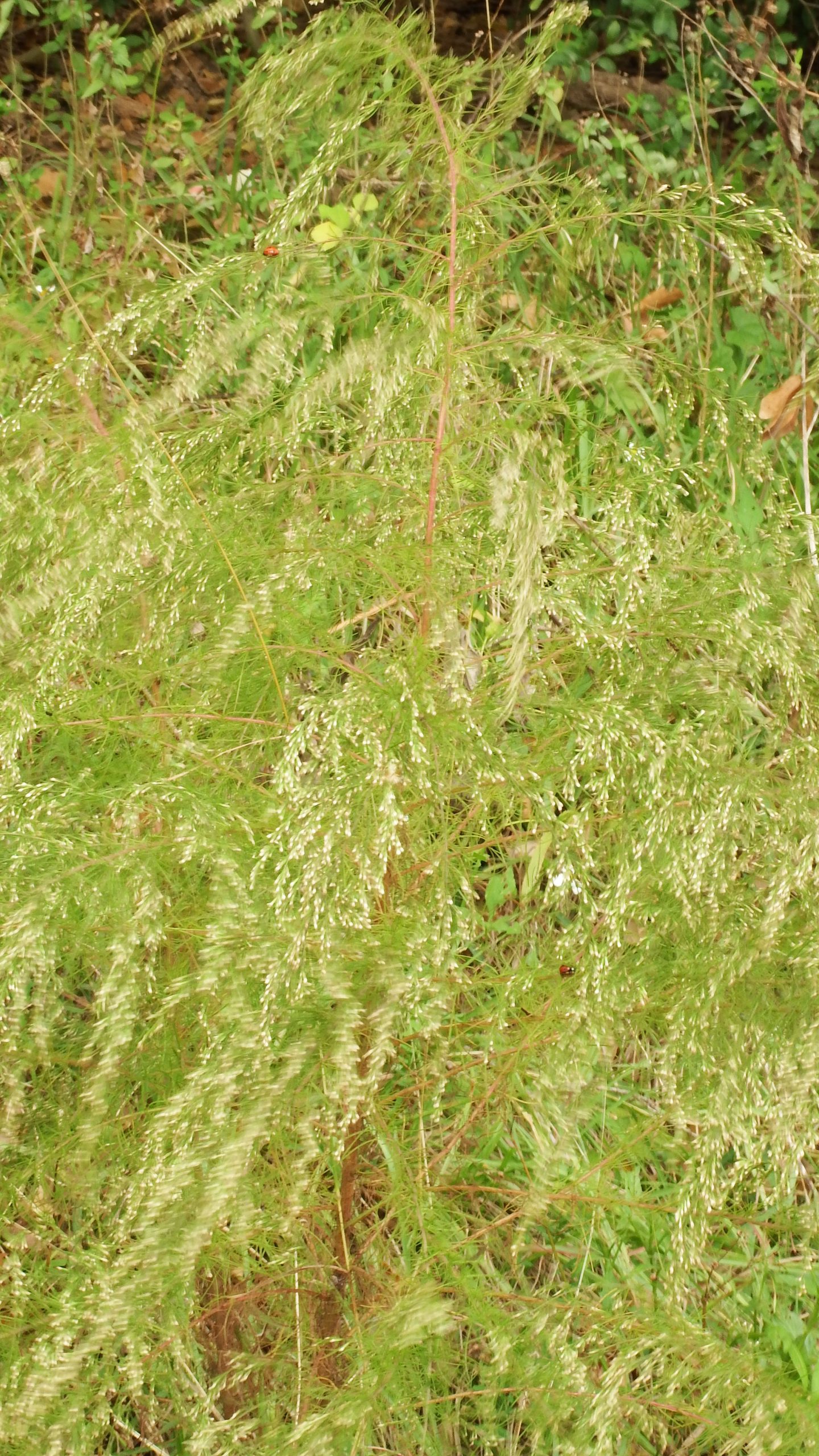
I have a nemesis in the plant world. Dogfennel. This weed, in which apparently no one is interested, has blindsided me time and again.
Dogfennel is the kind of weed you don’t even really notice. That’s a photo of it above and you can hardly find the outlines of the plant. The only reason I ever got interested is that dogfennel’s feathery foliage makes it look like an over-large fennel or dill. This is why, when I had dogfennel volunteer in my yard once, I kept it going for years. I had no idea what it was, but the similarity to fennel and dill made me hope that this plant, too was a host for black swallowtail caterpillars. It looked just like dill and even had a nice aromatic smell when crushed.
Not one swallowtail caterpillar was ever seen on my towering dogfennel which, by the end, had topped seven feet. There is no surprise in this. Dogfennel isn’t even in the same family as culinary fennel and dill. Those are in the carrot family. Dogfennel is a eupatorium, Eupatorium capillifolium to be precise.
Since I was really hoping to find swallowtail caterpillars on my plant, I checked it frequently. While the caterpillars were absent, there were lady bugs galore, adult, larva and pupa. I never noticed any aphids, which is what lady bugs eat, but they were probably there because my lady bugs were seemingly going through their entire lives on this plant.
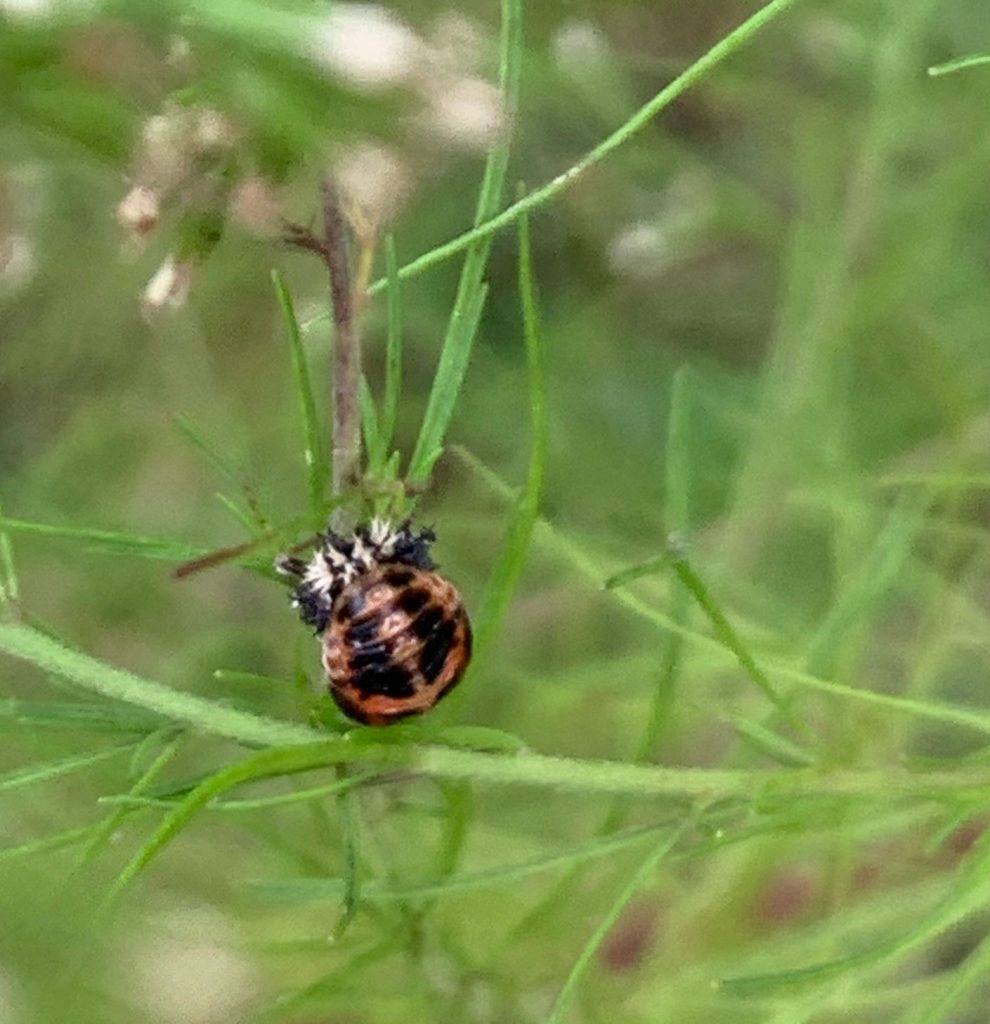
This is a lady bug pupa on dog fennel.
When someone finally identified my impressive weed, I was able to look it up and learn that it is quite toxic, containing compounds that cause liver failure. And a light bulb went on for me. I had a dog who ate everything he could find. He poisoned himself spectacularly more than once. For many years, he had elevated liver enzymes and I spent an absurd amount of money trying to diagnose the problem. Eventually, I gave up and just told vets that his liver enzymes were elevated and no one knew why.
Now I know why. Dogfennel. I tasted it once because it is very aromatic, it looks like dill or fennel, and I am not very bright. It tasted ok, but I didn’t feel well afterwards and decided that while it was probably not the plant, I wouldn’t be cooking with it.
It was the plant.
I ran into dogfennel in the Park (north side of bayou, west of Jackson Hill bridge), and stopped to take a look. I was surprised, again, at how many insects were on the plant, at all life stages.
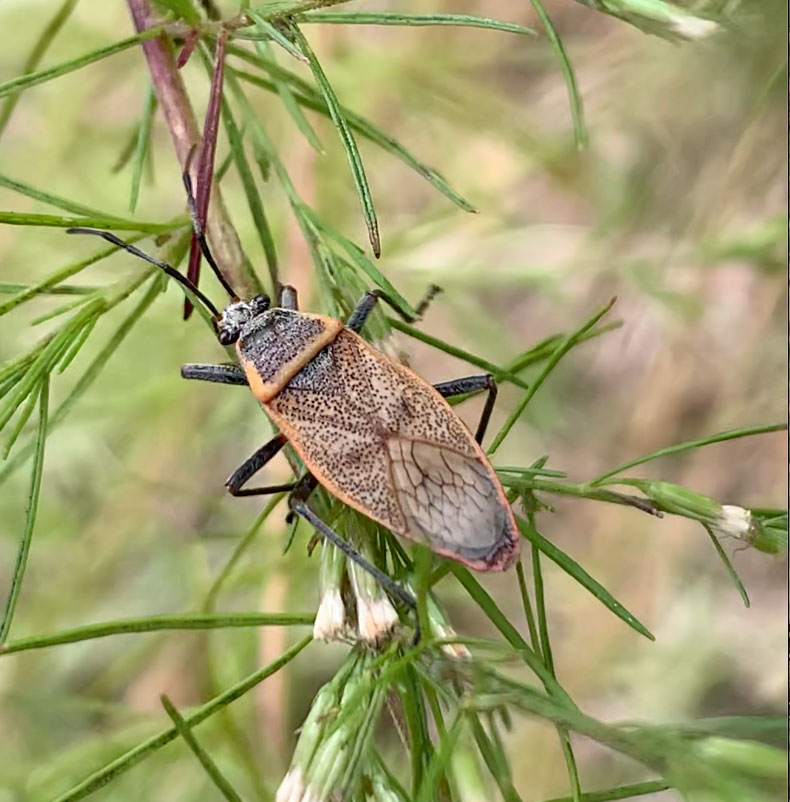
Mexican bordered plant bug on dogfennel
You might think this plant must offer something special to attract this level of insect attention. But no literature speaks to what it might be. There is the counterintuitive fact that the plant was named dogfennel because it looked like fennel and people put it in dog beds to keep the fleas down. It’s considered an insecticide and cited as particularly effective against mosquitoes and ticks.
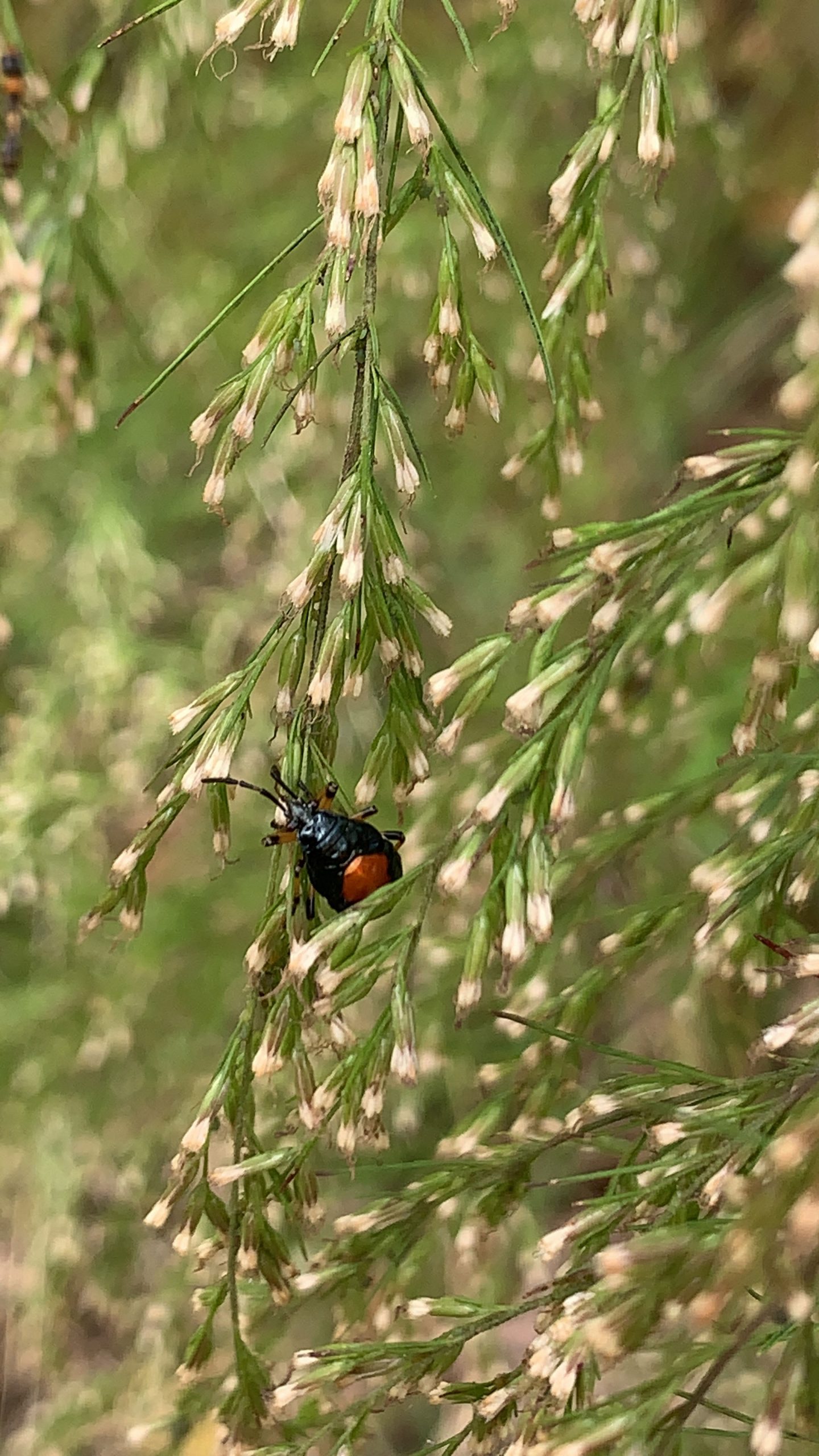
Another plant-sucking largus bug. I think it may be an earlier stage of the Mexican bordered plant bug, but I’m not completely sure.
So, there I was with a plant full of insects that are considered an insect repellent. I briefly entertained the notion that the sucking insects were making themselves unpalatable by feeding on toxic dogfennel. But those ladybugs were clearly not deterred.
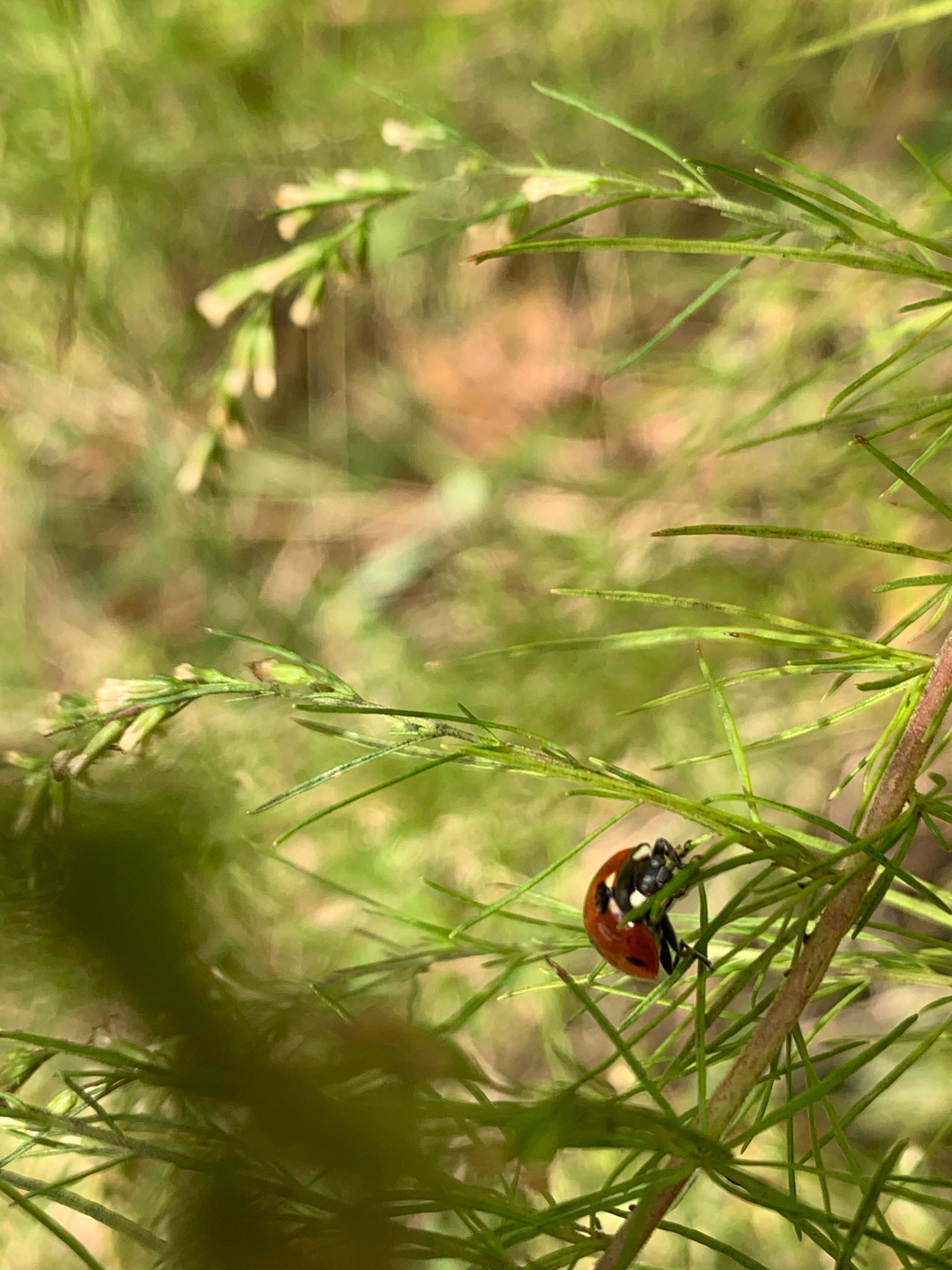
This is the moment in the blog where I usually produce an explanation. Not this time. For a plant that has loomed large in my psyche for many years, dogfennel is almost ignored by academia except with regard to eradicating it. It is something of a pest in a pasture. No one (besides my idiot dog) wants to eat it and if they do, they get sick. Farmers want to eliminate it. Lots of writing about that.
I even went back to the park later that day to make sure that not every plant in that area was covered in insects. They weren’t. Just this one.
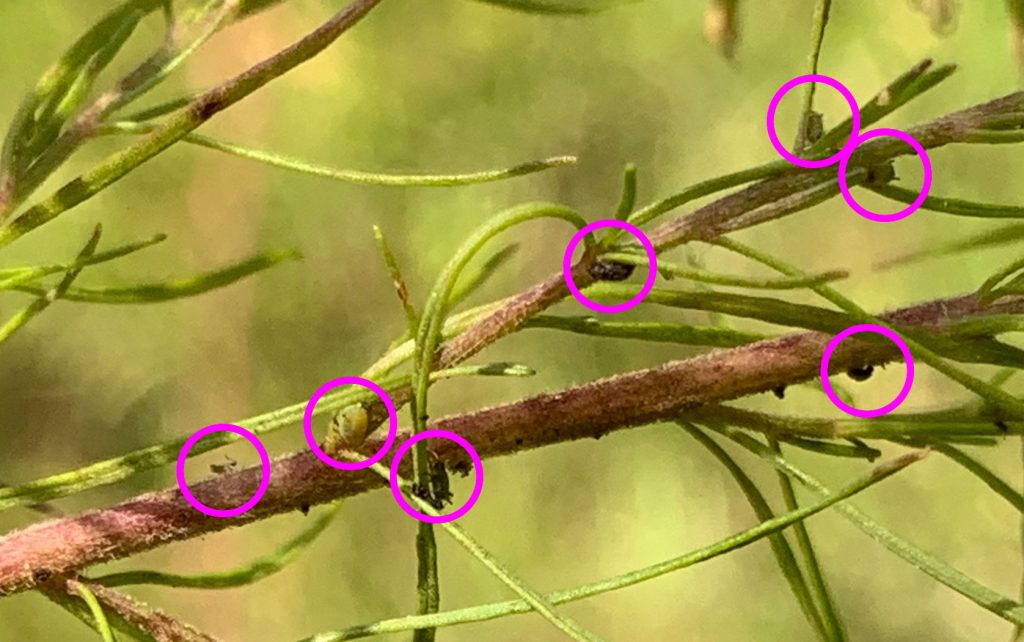
Every circle has a tiny insect in it. I checked other plants around this one. The dogfennel was the only plant covered in insects.
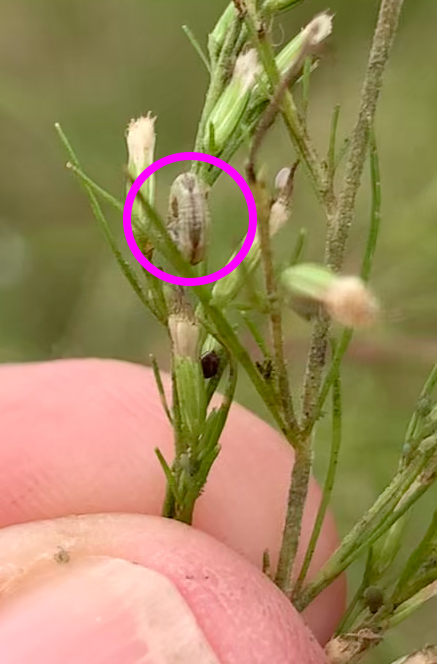
Tiny worm. Someone’s larva, happily eating away
There is a tiny bit of literature about one insect, the scarlet bodied wasp moth, that makes use of dogfennel. The males extract toxins from dogfennel, no one really explains how, and “sprays” a toxic brew over the female when they mate. This confers some protection from predators. The sharp red color of this moth is often a warning to predators of a poisonous meal. They are native to Florida, but occasionally seen here.
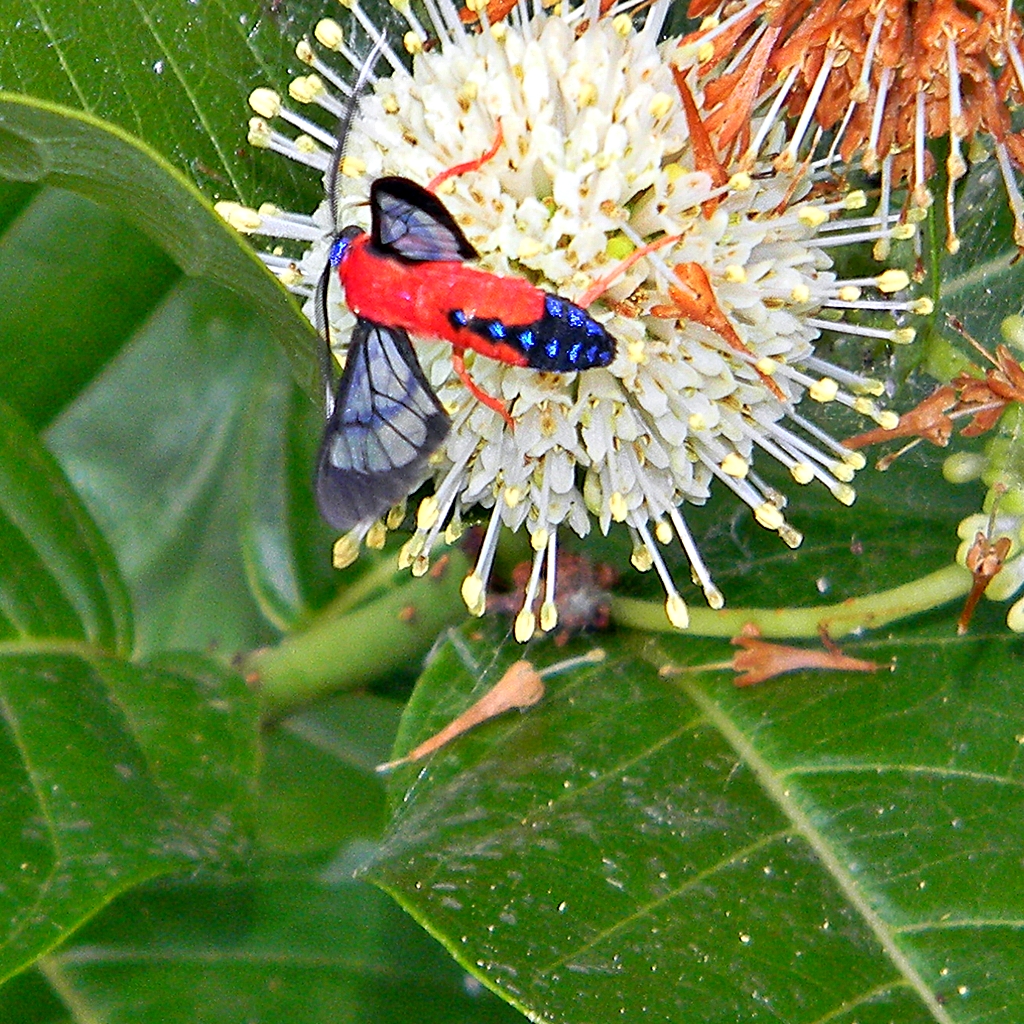
Scarlet bodied wasp moth on buttonbush. Photo by Bob Peterson from North Palm Beach, Florida, Planet Earth!
One more strange thing is that dogfennel seems to make insects placid. I often thought the ladybugs on my plant had died, because it could be hard to get them to move. Same situation with the Park’s dogfennel. This video shows me touching a ladybug over and over and her not reacting. This is somewhat weird. Both that I did it and that the ladybug didn’t mind.
So, I’m asking for help. If you know anything about dogfennel and how it manages to be both an insect repellent and favorite food for insects, email me at blog@AlisaKline.com. You can also email me to ask questions or tell me about something cool you saw in the Park.

